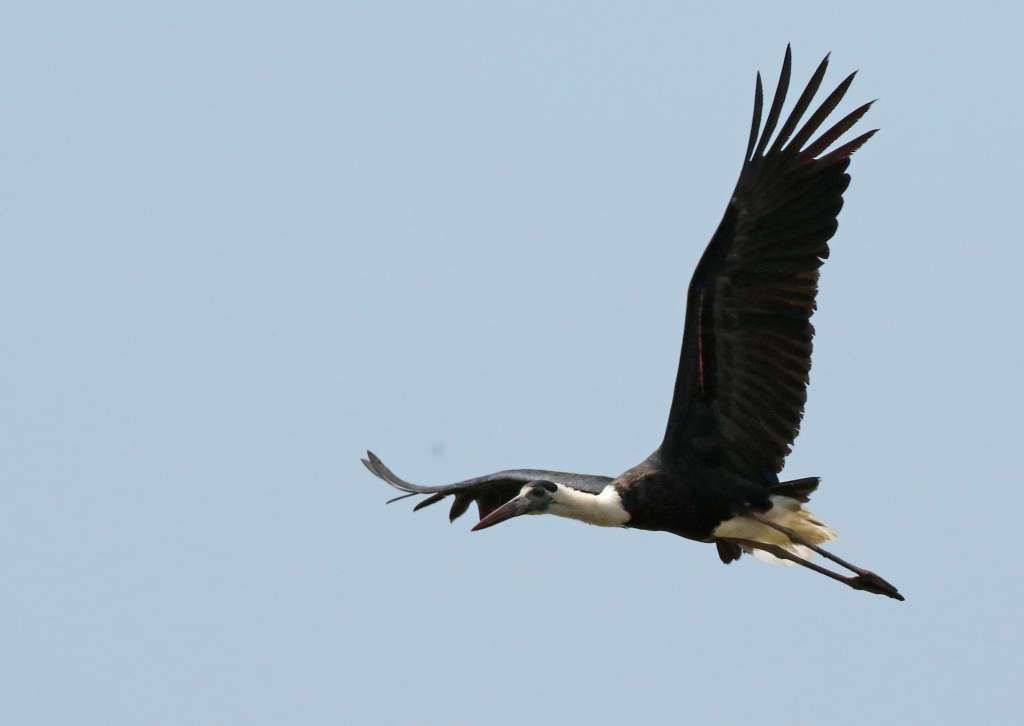I plan for this to be the last post in this series, unless someone has a topic or burning question which you think I should cover.
Mike had a couple more questions in response to the first post in this series:
What is an appropriate level of confidence in an identity? Is it worth submitting a record without knowing the species (a potential first Subalpine Warbler sp. in Dubai, (Gray’s/Sakhalin Leaf Warbler in HK)
And he followed this up with this one in response to Post 11:
I would be interested to know – with the benefit of 20-20 hindsight – how or if you think your description of Pom Skua might have been framed to provide 100% proof? Did you not see enough? or could you have written more that would have reasonably eliminated Arctic Skua?
Since these two questions are somewhat related, I will deal with them together. First – full disclosure – here is the description I submitted accompanying those two awful photos:
“The first of the two individuals was spotted resting on the sea. It was too far to photograph with my lens, but was visible for 10 minutes or more, as the boat was not moving at that point.
The second bird flew south past the stern of the ship, and several very distant photos were taken.
Posture, size, shape
The bird on the water had the size and shape of a gull. The bird in flight was also gull-like, though with a more powerful flight.
Physical appearance
Bird 1: Sat on sea. Dark cap and upperparts and thick dark breastband. Face and neck whitish. Shape of tail projection beyond wings could not be determined due to range. Structure felt to be too bulky for either Long-tailed or Arctic. Upperparts too dark for Long-tailed.
Bird 2: (see photos below) Flew with direct, powerful wingbeats past the stern of the boat about halfway to the horizon. Dark cap, pale underbody and dark wings and deep-chested appearance typical of Pomarine.
What do you think? Is there enough here to eliminate all reasonable doubt? Was I sure they were Pomarine Skuas? Yes. Did I provide enough evidence for this record to be accepted? I think not.
A question I always ask myself before I submit a record these days is, Would I accept this record (if I hadn’t seen it) on the basis of the evidence I have provided? I try to put myself in the shoes of those assessing the record and see it through their eyes. These days I would probably have put the skuas down as ‘probables’, because I could not prove the identification to others. I just didn’t see enough.
So, I think it comes down to confidence that you can demonstrate that you correctly identified the bird. Past experience helps, but it’s not essential. I’ve submitted quite a few records of birds which I had never seen “in the flesh” before.
Mike’s last question was:
How to make a case for unlikely records (e.g. Himalayan Griffon in Singapore)?
I think this comes down to the answer to two questions: 1. How confident am I that I’ve identified the bird correctly and can prove it? 2. Is there a possibility that the bird might have got there as a result of human interference?
To some extent, the second question is the job of the Records Committee to determine, which means you only really have to worry about the first. But if I do see a bird which I know might have suspect origins, I like to do a bit of my own research into regional patterns of vagrancy, whether or not other birds of the same species occurred in the region at the same time, and to what extent the species is traded or kept in captivity. I also want to pay special attention to unusual plumage damage or bare part abnormalities which might indicate that the bird had recently been in captivity.

